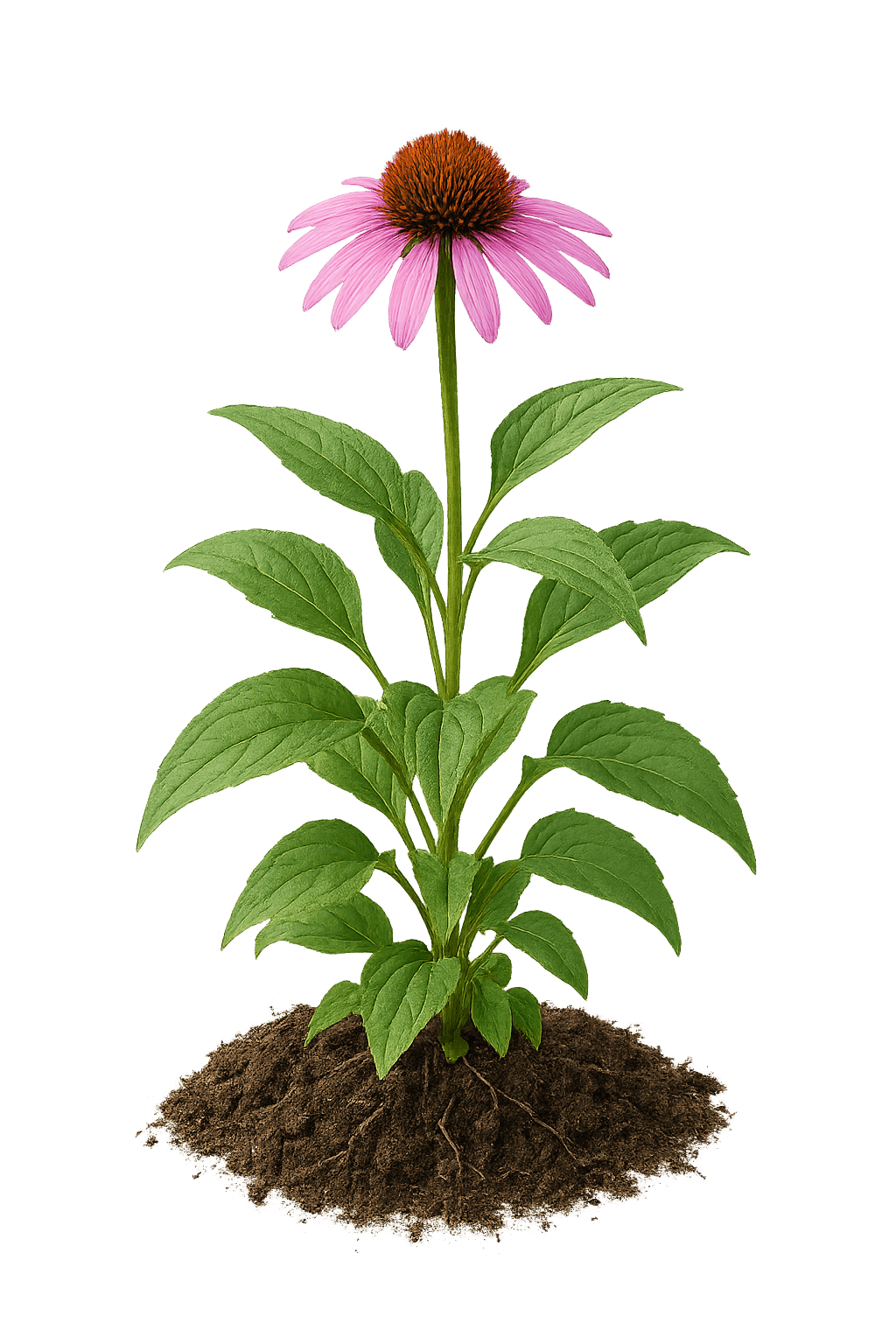Echinacea
Echinacea Detailed Encyclopedia
Echinacea is a famous immune-boosting herb with immune-enhancing, antiviral, and anti-inflammatory properties. Originating from North America, now widely cultivated worldwide, it is the most important immune-modulating herb in Western herbal medicine, commonly used to prevent and treat colds.

Basic Information
Family:Asteraceae
Scientific Name:Echinacea purpurea
Origin:North America, now cultivated throughout China
Harvest Period:Summer and autumn (July-September)
Growth Years:2-3 years
Plant Height:60-120 cm
Morphological Characteristics
Leaves:Lanceolate or ovate, alternate, serrated margins, rough texture
Flowers:Capitulum inflorescence, purple-red ray florets, cone-shaped disc, blooming July-September
Roots:Thick taproot, dark brown, fibrous
Stem:Erect, rough, branched
Growth Environment
Soil Requirements:Well-drained sandy loam or clay loam, pH 6.0-7.5
Water Requirements:Drought-tolerant, moderate watering
Light Requirements:Sun-loving, requires full sunlight
Temperature Requirements:15-25°C, cold-tolerant, can withstand -30°C
Humidity Requirements:Relative humidity 50-70%
Classification & Varieties
Main Varieties
Processing Types
💊 Medicinal Value
Nature & Taste:Sweet, slightly bitter, cool
Meridian:Enters Lung, Spleen meridians
Main Efficacies
- •Enhances immunity, improves body resistance, prevents infections
- •Antiviral and antibacterial, suitable for colds, flu, respiratory infections
- •Anti-inflammatory and reduces swelling, promotes wound healing, relieves inflammation
- •Stimulates white blood cell production, enhances phagocytosis
- •Activates immune system, shortens duration of colds
Active Ingredients
📖 Usage Methods
Dosage
- •Decoction: 3-9g
- •Powder: 1-3g
- •Stew: Add to herbal formulas
- •Tea: Dried herb or root steeped in water
⚠️ Contraindications
- •Use with caution in autoimmune diseases
- •Not for long-term continuous use, take breaks
- •Pregnant women use under medical supervision
- •Children can use in moderation
🌱 Cultivation Techniques
Cultivation Points
- •Select sunny location with good drainage
- •Deep tillage, apply organic fertilizer
- •Spring or autumn sowing, plant spacing 30-45cm
- •Timely weeding, moderate watering
Common Pests & Diseases
Prevention Measures:Strengthen field management, avoid overwatering
Treatment Methods:Spray neem oil or fungicide at early stage
✂️ Harvest & Processing
Harvest Timing:Summer-autumn July-September, harvest when flowering
Harvest Method:Cut aerial parts or dig up roots
Processing Methods
- •Fresh herb: Use directly or make tincture
- •Dried herb: Shade-dry to preserve active compounds
- •Echinacea extract: Alcohol extraction
Storage:Store in cool, dry place, sealed to preserve potency
🏛️ Cultural Value
History:Echinacea has been used by Native Americans for centuries, introduced to Europe in the 19th century
Symbolism:Symbolizes health and protection
Gift Culture:Traditional immune-boosting herb
Modern Research:Modern research confirms immune-stimulating, antiviral, and anti-inflammatory effects
Market Value:Important herbal supplement, widely used in cold and flu prevention